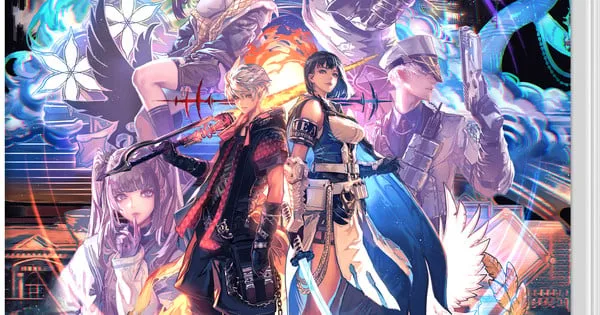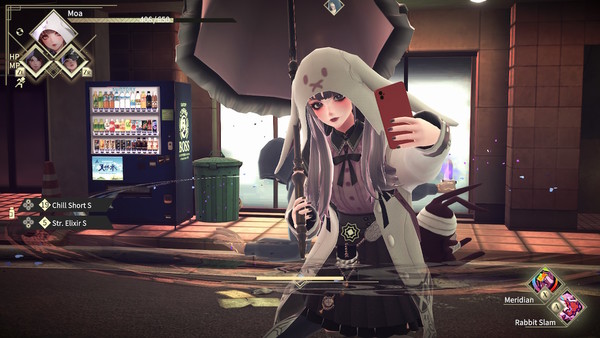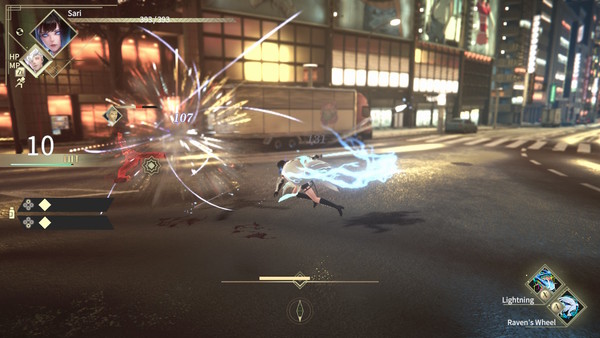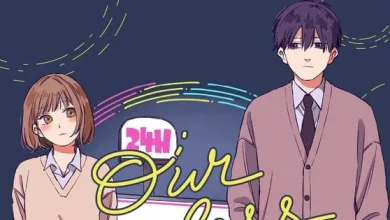Reynatis Game Review – Game Review

Reynatis is a high-flying action RPG that, to its credit, has a solid identity and visual aesthetic. A lot of comparisons have been drawn between it and Kingdom Hearts, and while they’re not uncalled for, it’s worth pointing out that about all Reynatis has in common with Kingdom Hearts is a teenaged protagonist and a soundtrack composed by Yoko Shimomura. Reynatis stands on its own, but it has a rather shaky stance.
©FURYU Corporation
The setting is inspired, albeit one that’s going to remind you a ton of The World Ends With You (fittingly, Reynatis features a crossover with NEO: The World Ends With You). Protagonist Marin is definitely biting from Neku’s misanthropic apple a little, at least in personality. Deuteragonist Sari is ironically more approachable: an officer working for M.E.A.’s task force policing wizard activity (while also working as the branch’s literal poster child). It’s a good set-up, a clash between a disaffected youth who only wants his independence and freedom and an agent of the law trying to protect people through an admittedly imperfect system. It takes a bit for these two forces to actually encounter each other (and for a while, they’re kept completely separate), but their clashes are always fun. Reynatis‘s wizards are also very endearing to one’s inner chuuni: a gaggle of stylish young adults who must “suppress” their powers by hiding their faces with their hoodies or hats and who gain sparkling hair and a glowing eye when their magical nature is “liberated.” Add in stuff with the magical drug addicts and the drug-mutated Damned, and you’ve got a great setting.

©FURYU Corporation
The problems start when you factor in a lot of the mechanics. The “Hoodie” system is a great touch, and it ties in wonderfully with Reynatis‘ themes (especially since even Sari gets some grief from civilians for being a wizard). In battle, it forces you to play intelligently: Liberated wizards burn through their MP, losing more when they unleash attacks. Suppressed wizards can drain extra MP from enemies by stylishly dodging attacks at the right moment; by draining enough, they can use a neat “Burst” that stuns enemies and sets them up for combos. So far, so good. It also ties in nicely with the “Stress” wizards accumulate from “Suppressing” all the time; hearing the veiled slurs and mistrust the common folk hurl towards Wizards weighs on your characters (and can inflict debuffs if you gain too much).
It’s amusing to burn through that Stress in a fight. In practice, though, this means that Marin is hampered for a good chunk of the game; you can also Liberate outside of combat, which lets you see hidden item caches or skill-enhancing Wizarts at the risk of alerting everyone around you, forcing you to run before the M.E.A. (and a difficult battle) descends upon you. Oh, and random encounters also count as Liberating on the spot, so once you’re out of battle, you need to either vacate the area or find a specific hiding spot. This makes exploration as Marin rather convoluted, essentially punishing him for exploring maps to their fullest (lest you get the M.E.A. sicced on you) or even speaking to NPCs (lest you build up too much Stress).
Skill customization? Well, it’s there, but it could also use some work. Characters can scan magic graffiti tags called Wizarts to learn new attacks or earn EXP boosts, which are usually gated off by Malice (basically, how many side quests you’ve done). You can equip up to two special attacks and a number of other modifiers, but it can take a long time before you’re able to really mess around with the system much; a lot of newer skills might require Malice rates in the 70s (you start the game at 99% Malice), and the systems needed to upgrade your attacks past Level 3 are barred from you for a bit. This also means maxing out your attacks early on is effortless if you explore, trivializing most random encounters. Sure, some boss fights toss in a few wrinkles, like Armor that needs to be broken down with special attacks or enemy attacks that can’t be evaded, but those come in a bit too infrequently.

©FURYU Corporation
Reynatis‘s stylish looks are also hampered by some performance. Now, don’t get me wrong: I grew up in the era of RPGs on the Nintendo DS and PS2. A little graphical jank is good for you; it’ll grow some hair on your chest. But Reynatis doesn’t do very well in crowded areas, with some locales like Shibuya’s iconic crosswalk chugging especially badly. Again, this is a serious pity because the game otherwise looks really good on the Switch. A lot of love went into depicting all of the shops and sidewalks, as well as the alley cats you can pet to lower Stress. There are also a lot of issues with invisible walls (stairs you can’t climb, paths you can’t enter) or just weird geometries in general for some obstacles.
I ultimately walk away from Reynatis happy but with a bit of disappointment. It’s a fun game with all the makings of a great cult hit, from memorable characters to a fun setting. Reynatis has all the heart and charm of a proud B-game. If some of the systems were fine-tuned just a bit, you’d have a full-on sleeper hit on your hands. It breaks my heart that I cannot give Reynatis that whole-hearted approval. But the effort is there, and I’m hoping a possible sequel helps bring out the best in Reynatis.
Content warning: Reynatis features drug use and drug addiction as major themes in its story, with many side characters struggling from substance abuse and several NPCs soliciting you for drugs.
Source link
#Reynatis #Game #Review #Game #Review



